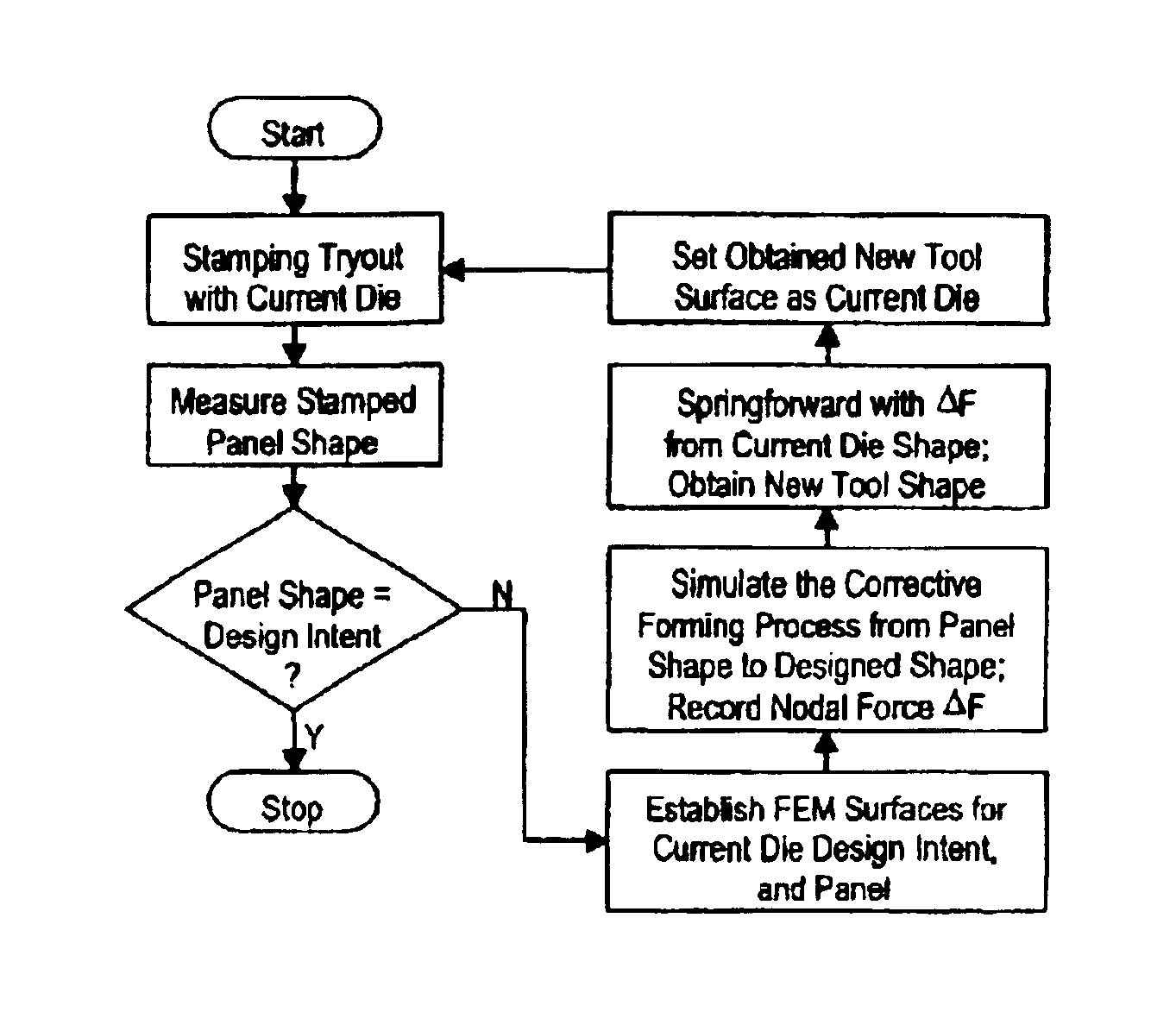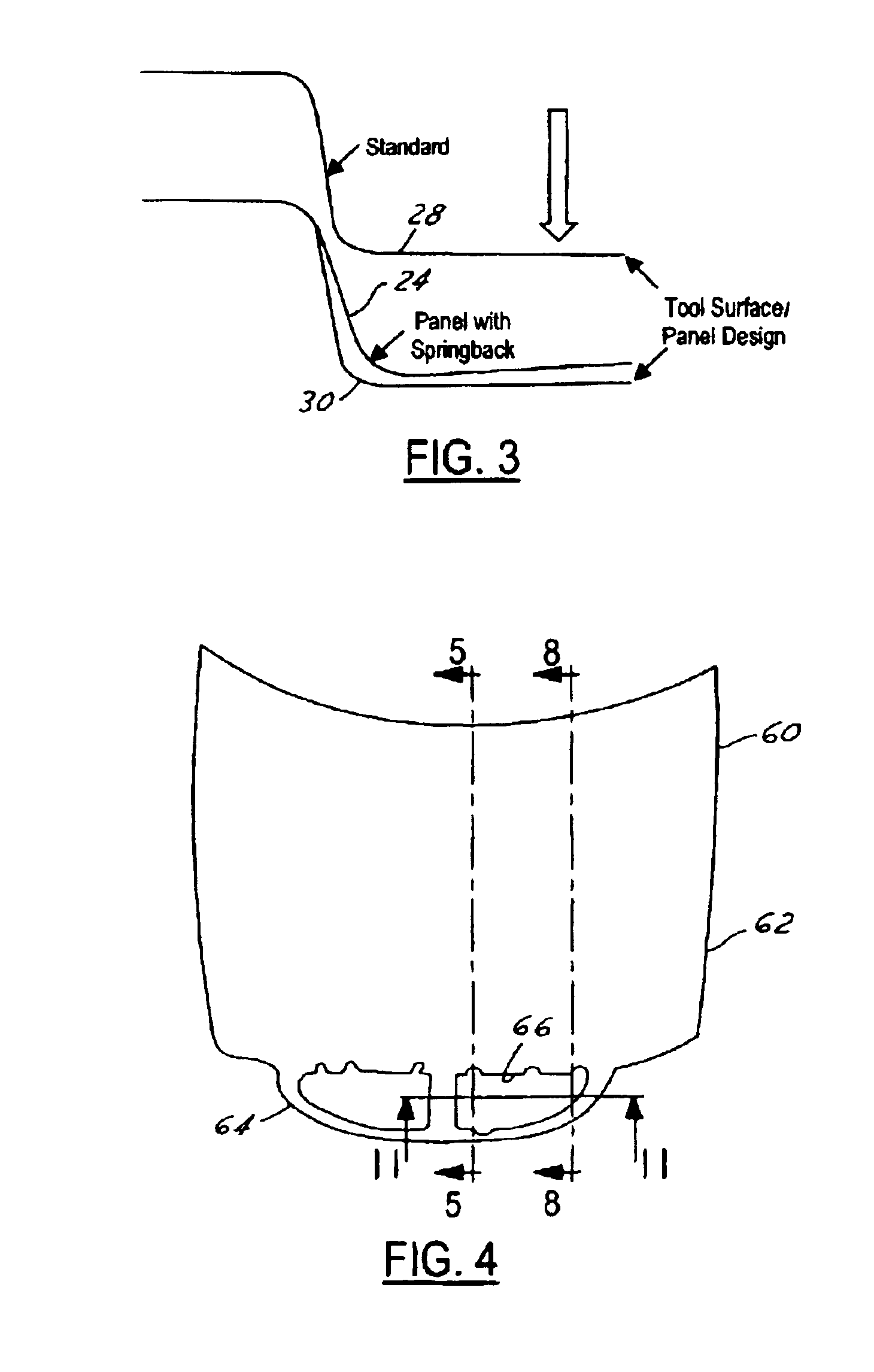Method of modifying stamping tools for spring back compensation based on tryout measurements
a technology of spring back compensation and stamping tool, which is applied in the direction of manufacturing tools, shaping tools, instruments, etc., can solve the problems of large expense, large time expenditure, and large amount of time required for bringing forth satisfactory results
- Summary
- Abstract
- Description
- Claims
- Application Information
AI Technical Summary
Benefits of technology
Problems solved by technology
Method used
Image
Examples
Embodiment Construction
[0025]Referring to FIGS. 1-3, a part having a profile is shown by the line 22 (Die 0). Line 22 denotes a sectional line taken through a three-dimensional part. In the start of the process, a stamping tryout is made using a test or current die. The workpiece will typically start out as a flat sheet of material. The panel or current die, also referred to Die 0, can have a profile that is identical to the profile of the design intent workpiece or may have a profile which has some initial modifications. After stamping, the workpiece is removed from the die. The workpiece initially has a profile shown by line 24 (Part 0). This profile will be measured by appropriate means including but not limited to optical scanning techniques. Another technique is to use a coordinate measuring machine. A coordinate measurement machine has a needle-type contact point which travels along the surface to measure its geometry. Between the lines 22 and 24 is a spring back, FIG. 2, item 26.
[0026]A comparison ...
PUM
| Property | Measurement | Unit |
|---|---|---|
| Force | aaaaa | aaaaa |
| Surface | aaaaa | aaaaa |
Abstract
Description
Claims
Application Information
 Login to View More
Login to View More - R&D
- Intellectual Property
- Life Sciences
- Materials
- Tech Scout
- Unparalleled Data Quality
- Higher Quality Content
- 60% Fewer Hallucinations
Browse by: Latest US Patents, China's latest patents, Technical Efficacy Thesaurus, Application Domain, Technology Topic, Popular Technical Reports.
© 2025 PatSnap. All rights reserved.Legal|Privacy policy|Modern Slavery Act Transparency Statement|Sitemap|About US| Contact US: help@patsnap.com



